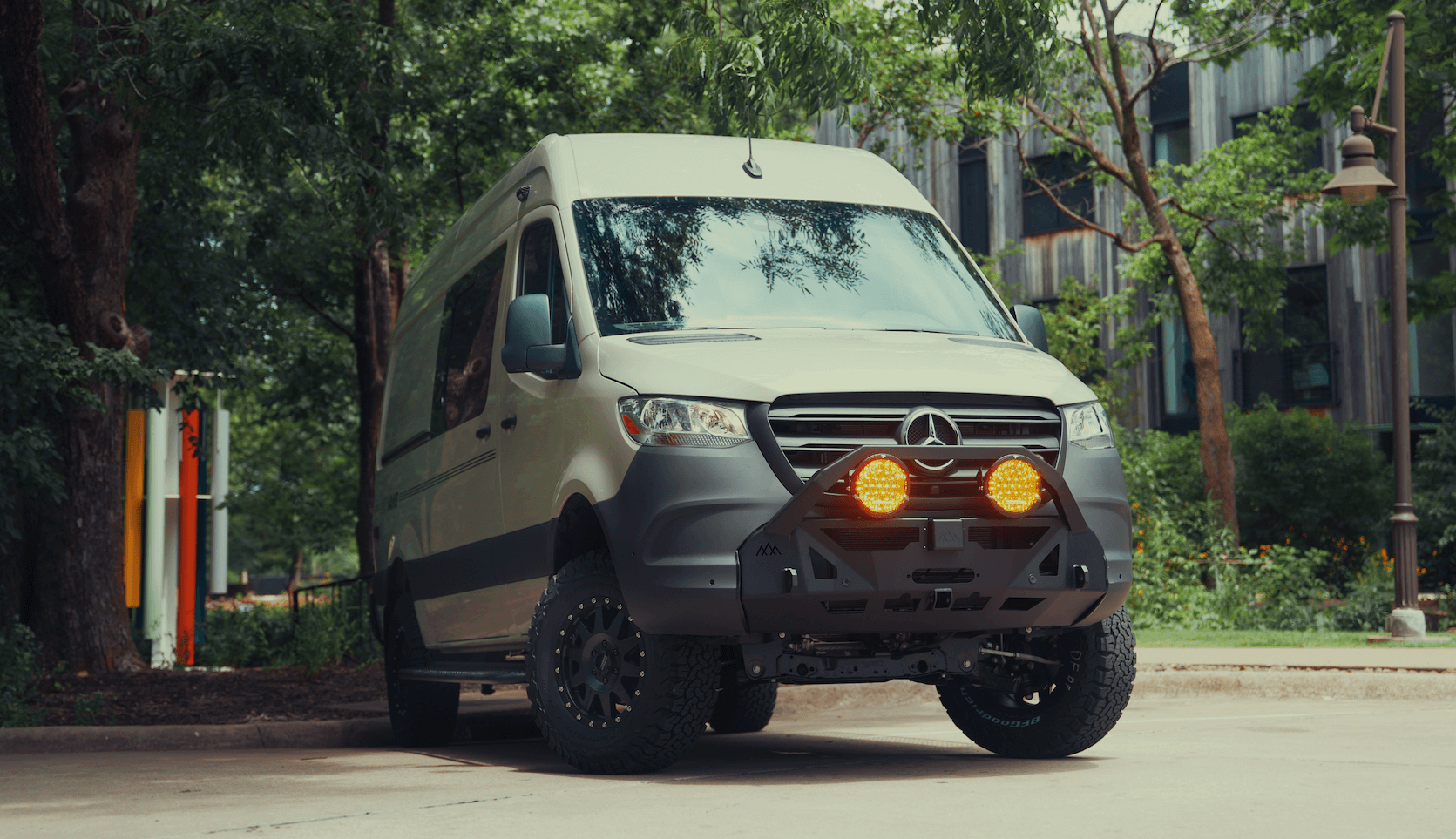Recreational Vans

The Ford Transit with all wheel drive blends pavement comfort with confident traction on snow, rain soaked highways, and graded forest routes. The system routes torque proactively to maintain grip, which helps when climbing wet switchbacks or easing across rutted trailheads. Many builders choose the high roof body for stand up living, plus long or extended length wheelbases to fit galleys, beds, and storage. Compared with rear wheel drive vans, AWD improves stability on loose surfaces while keeping road manners that feel close to a large SUV. It is not a rock crawler, yet for most campers the added traction opens access to dispersed sites and shoulder season travel.
AWD Transits do not offer a low range transfer case. Think of the system as traction assistance for poor conditions rather than a deep trail machine. Tire choice makes a bigger difference than people expect. A quality all terrain tire in a load rating appropriate to van weight, paired with a full size spare and a simple recovery kit, adds real confidence. Ground clearance is moderate, so careful line choice and slow driving protect the underbody.
Payload and towing vary by year, engine, and configuration, but the platform generally offers healthy margins for a complete camper. Keep a running weight spreadsheet for cabinetry, appliances, water, batteries, passengers, and gear. Balanced weight over the axles keeps handling predictable and braking crisp. A tow package can add flexibility for bike shuttles or a small adventure trailer when your layout is people focused.
Start with the van that fits your use. Shorter wheelbases are nimble in cities and trailhead lots. Long wheelbases increase cabinet runs and bed length. High roof models let most adults stand, which makes meal prep and rainy day living far more pleasant. Sketch traffic flow from the slider and rear doors to identify where mud, skis, and bikes land so that soft goods stay fresh.
Decide whether you sleep east west or north south. A raised bed with a garage underneath swallows bins, tools, and bikes. Families might prioritize belted seating that converts to a bed. Swivel front seats create a compact lounge around a foldaway table. Use marine grade latches and soft close hardware so nothing rattles across washboard.
Transit bodies benefit from meaningful sound deadening to calm road noise. Layer with insulation that tolerates moisture and temperature swings. Ventilation is the heartbeat of a camper. A roof fan paired with screened windows keeps air moving. For four season use, a fuel fired air heater sips from the vehicle tank and pairs well with a compact heated water system.
Modern camper loads favor a lithium battery bank sized to your lifestyle. Common choices range from 200 to 400 amp hours, scaled to induction cooking, refrigeration, and remote work. Solar on the roof offsets idle days, while a DC to DC alternator charger replenishes the bank during drives. Shore power is a bonus near outlets. Plan lighting in zones, mixing warm task lighting with red night options to protect dark adaptation at campsites.
Not every add on moves the needle. Choose upgrades that improve safety, comfort, and real world access.
A simple water system with a protected tank, sediment filtration, and a reliable pump supports cooking and cleanup. Many builders choose a removable cassette toilet or a stowable dry flush unit for flexibility. In the galley, induction cooktops shine when battery capacity allows. Otherwise, consider a safe portable stove with a clear ventilation plan.
Fasteners back out under vibration if not spec’d and installed correctly. Use thread locking where applicable and revisit torque on critical mounts during shakedown trips. Soft mounts on heavy components like batteries and tanks reduce stress on the chassis and cabinetry.
An AWD Transit camper can be built incrementally or as a single project. Budget drivers include electrical systems, custom cabinetry, windows, and climate control. Lead times for components fluctuate, so ordering ahead prevents gaps. A structured design process and staged shakedown trips catch small issues before long journeys. Documentation matters. Label wires, keep schematics, and track all part numbers for future service.
Complex electrical work, safe propane routing, roof cuts, window installs, and interior metal fabrication are areas where professional expertise pays off. A well planned and well executed build protects your investment and your safety on the road.
If you want a turnkey path to a dependable AWD Transit camper, work with a builder that understands real travel, off grid power, and the daily details that make a van easy to live with. Explore our recreational vans to see how a purpose built layout supports long weekends and cross country loops. For a ground up approach that aligns every system with your route and gear, start a custom van build. Looking for a finance friendly platform option to get rolling sooner, review our mainstream vans.
Ready to aim your AWD Transit at new trailheads and far flung campsites. Share how you travel and what you carry, and we will translate that into a durable, quiet, and efficient camper that works every day.
Tell us what your AWD Transit camper needs to do and where it needs to go. We will turn that into a clear plan, a transparent build timeline, and a finished van ready for handoff in Fayetteville, Arkansas. Submit the form to begin.
Ready to turn an AWD Transit into a capable camper built for real travel, not showroom floors? Tell us how you camp and we will design, build, and hand off a dialed rig. Start with a custom van build or a targeted upfit and pick up your finished van in Fayetteville, Arkansas. Submit the form to book a consult and get your timeline on the calendar.
ADDRESS:
6159 E Huntsville Rd, Fayetteville, AR 72701
PHONE:
(479) 326-9200
EMAIL:
info@ozkvans.com